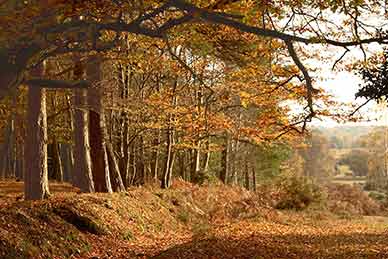Wood-banks

Wood-banks, originally surmounted by a paling fence, were constructed to protect young or regenerating trees from damage by commoners’ stock – ponies, cattle and donkeys - and deer.
After 20 years, or so, when the trees had grown sufficiently to be safe from the effects of browsing, the fences were removed and the woodland was ‘thrown open’.
The land within the fencing was called an inclosure, and the woods so fenced often still carry that name.
The first Act of Parliament that allowed New Forest woodland to be enclosed was passed in 1483 to protect regenerating hazel coppice. New Forest timber was, though, increasingly used by the Navy for shipbuilding, and after concern about the area’s ability to supply sufficient wood, further Acts followed in 1698, 1808 and 1851, and, more recently, in 1949, authorising the enclosure of progressively more land.
The creation of inclosures caused conflict between the authorities – the Office of Woods, and later the Forestry Commission – and the commoners, as each reduced the area within which stock could feed.
Today, old, moss-encrusted wood-banks serve as a reminder of those far-off days.
Find out more about the history of New Forest woodland inclosures:
References:
A Wild Heritage, The History and Nature of the New Forest: Terry Heathcote
More links
Other related links
Search this site

Sadly, 58 animals were killed - 35 ponies, 13 cows, 8 donkeys and 2 sheep, whilst a further 32 were injured - 3 pigs, 9 donkeys, 11 cows and 9 ponies.
(Forty-three accidents occurred in daylight, 15 at twilight and 101 in the dark. Twenty-seven accidents were not reported by the driver involved).
Here's just one horrific example - Three donkeys killed in collision with van at notorious New Forest blackspot (Advertiser and Times)

